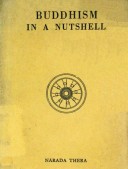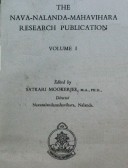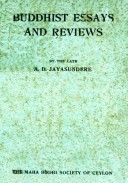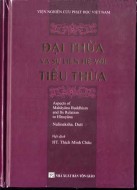Tìm Sách
Sách tiếng Anh-English >> The Essentials of Buddhist Philosophy
Thông tin tra cứu
- Tên sách : The Essentials of Buddhist Philosophy
- Tác giả : Junjiro Takakusu
- Dịch giả :
- Ngôn ngữ : Anh
- Số trang : 201
- Nhà xuất bản : Honolulu, T. H, University of Hawaii
- Năm xuất bản : 1956
- Phân loại : Sách tiếng Anh-English
- MCB : 12100000011546
- OPAC :
- Tóm tắt :
INTRODUCTION
(1) How to Depict Buddhism
A discourse on Buddhist Philosophy is usually begun with the philosophy of Indian Buddhism, and in this respect it is important to trace the development of Buddhist thought in India where it thrived for 1500 years. It should be remembered, however, that before Buddhism declined in India in the eleventh century, its various developments had already spread far into other countries. Hinayana Buddhism, or the Small Vehicle, which emphasizes individual salvation. continued in Ceylon, Burma, Siam and Cambodia. Mystic or esoteric Buddhism developed as Lamaism in Tibet. Mahayana Buddhism, or the Great Vehicle, which emphasizes universal salvation. grew in China where great strides in Buddhist studies were made and the different thoughts in Mahayana schools were systematized.
In Japan, however, the whole of Buddhism has been preserved — every doctrine of both the Hinayana and Mahayana schools. Although Hinayana Buddhism does not now exist in Japan as an active faith, its doctrines are still being studied there by Buddhist scholars. Mikkyo, which we may designate as the Esoteric Doctrine or Mysticism, is fully represented in Japan by Tendai mysticism and Toji mysticism. The point which Japanese mysticism may be proud of is that it does not contain any vulgar elements, as does its counterpart in other countries, but stands on a firm philosophical basis.
The schools which were best developed in China are Hua-yen (Kegon, the ‘Wreath’ School) and T’ien-t’ai (Tendai, the ‘Lotus’ School). When the Ch’an (Zen) School is added to these two, the trio represents the highest peak of Buddhism’s development. These three flourished in China for a while and then passed away, but in Japan all three are still alive in the people’s faiths as well as in academic studies.
CONTENTS
Chapter
I. Introduction
II. Indian Background
III. Fundamental Principles of Buddhist Philosophy
IV. The Kush a School
(Realism, Abhidharmakosa, Chu-she)
V. The Jojitsu School
(Nihilism, Satyasiddhi, Ch’eng-shih )
VI. The Hosso School
(Idealism, Mere-Ideation, Vijnaptimatravada, Yogacara, Fa-hsiang )
VII. The Saneon School
(Three Treatises, Negativism, Madhyamika, San-lun)
VIII. The Kecon School
(Totalism, Wreath, Avatansaka, Hua-yen)
IX. The Tendai School
(Phenomenology, Lotus, Saddharmapundarika, T’ien-t’ai )
X. The Shingon School
(Mysticism, True Word, Mantra, Chen yen)
XI. The Zen School
(Pure Intuittonism. Meditation, Dhyana. Ch’an )
XII. The Jooo School
(Amita-pietism, Pure Land, Sukhavati, Ching-t’u)
XIII. The Nichiren School (Lotus-pietism, New Lotus)
XIV. The New Ritsu School (Disciplinary Formalism,Vinaya, Lu)
XV. Conclusion
Index
 Facebook
Facebook
 Google
Google
 Google+
Google+


















